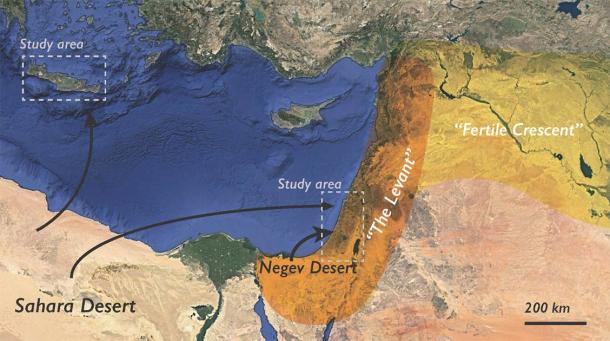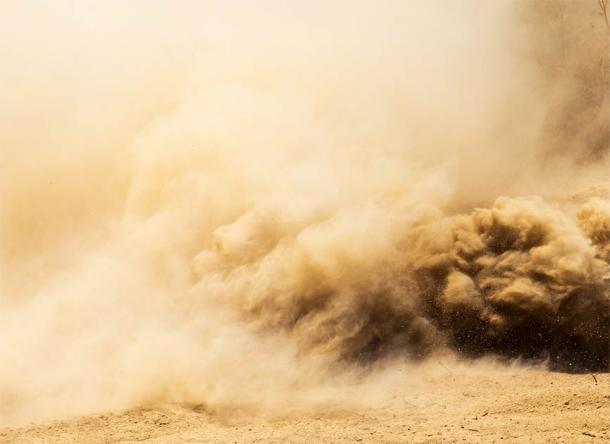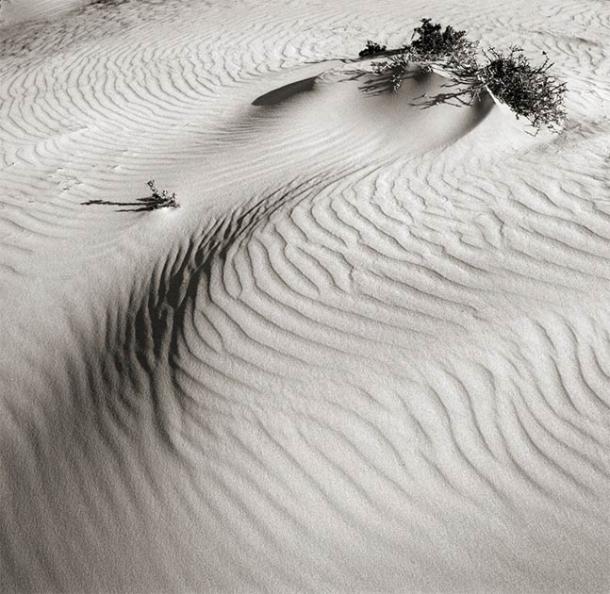We consider dust to be a nuisance and worse, but without it, the history of humanity may have been very different. This is because dust deposits played a crucial role in creating an important fertile area in the Middle East. This became the gateway for early humans leaving Africa and allowed them to enter Eurasia. Moreover, the dust deposits contributed to the development of the Fertile Crescent which played a critical role in the history of civilization.
Over one hundred thousand years ago, modern humans ( Homo sapiens ) left Africa and spread over Asia and Europe. It is accepted that the only route that they could have followed must have led through “a fertile region in the eastern Mediterranean Sea called the Levant [that] served as a critical gateway between northern Africa and Eurasia,” according to The Geological Society of America research article. This fertile region, in what is now Israel, Palestine and other neighboring nations, allowed our ancestors to enter new regions and eventually to populate the rest of the planet.

Dust deposits were sampled and studied from a number of areas in and around the Fertile Crescent. ( The Geological Society of America )
Why Mediterranean Soils And Dust Vary In Thickness
The southern Mediterranean area was fertile despite some unique environmental and geophysical features. Thick soils are more fertile and tend to form in moist and humid environments. However, in the arid Levant, the soil is thick and good for agriculture. According to The Geological Society of America article, the “more arid southeastern regions have thick, productive soils,” which is atypical.
The generally accepted theory for thin soils in other areas is erosion. According to the study from The Geological Society of America “Erosion of pre-existing thicker soils is a common hypothesis used to explain this bare terrain.” The reason for the thick soils in the dry Levant was that the area was not subject to a great deal of soil erosion. Dr Rivka Amit, who works at the Geological Survey of Israel and some colleagues, decided to investigate if there was another reason why soils are thick and therefore fertile in the region.

Dust deposits carried by the wind to other places created fertile soils in the Fertile Crescent. (shankz / Adobe Stock )
The Rich Fertile Dust Of The Negev Desert Dune Fields
Dr Amit and her team began by tracing dust deposits in the fertile area of the eastern Mediterranean to its source. They also collected dust deposits from a wide geographical area, which was also studied. They found that thin soils, not suitable for vegetation, contained dust from distant deserts like the Arabian and Sahara. However, the thicker soils, which produce more vegetation, had dust that came from the Negev desert , which is in southern Israel. The Negev is famous for its massive dune fields .
The thick soils in the Levant were formed over 200,000 years ago during an Ice Age. Glaciers covered large areas and they churned up rocks and this created dust and sand. This accumulated in the Negev Desert and led to anomalous dust depositions in the surrounding area’s soils. As a result, the soils of the southern Levant contain a higher proportion of coarse silt quartz and this led to the development of a loosely compacted yellowish-gray deposit of windblown sediment (loess), which is very fertile. Dr Amit and her colleagues wrote in The Geological Society of America study that “This proximal intense dust supply produced greatly thicker soils.”

Sand dunes in the Negev desert today. (Alexandr Makarenko / Adobe Stock )
Coarse, Rich Dust From The Negev Desert Changed Everything
In the distant past, planet earth was much dustier. Dr Amit is quoted as saying that this “allowed extensive dune fields like those in the Negev to build up, creating new sources of dust and ultimately, thicker soils in places like the Levant.” The southern Levant was fertile because of these dust deposits, especially from the Negev. Amit also tells us that erosion in the region was not an important factor and that “What’s important is whether you get an influx of coarse [dust] fractions. [Without that], you get thin, unproductive soils.” These dust deposits were likely spread to the Levant region by changing wind patterns.
Further investigation revealed that before the rich dust deposits arrived in the area that the soil in the southern Levant was thin and therefore not fertile. Dr Amit further explained that “The landscape was totally different, so I’m not sure that people would [have chosen] this area to live in because it was a harsh environment and [an] almost bare landscape, without much soil.” This was an amazing find because without the dust deposits early humans may not have been able to leave Africa and settle in Eurasia. Instead, the region would have been so inhospitable that it would have acted as a barrier rather than a gateway.
Fertile Dust Deposits Created The Cradle of Civilization
The importance of the dust deposits from the Negev dune fields also played an important role “in transforming the Levant into ‘the land of milk and honey’ and a cradle of civilizations” according to Dr Amit’s recently published study. Without the dust, the Levant or the Fertile Crescent would not have produced some of the earliest settled agricultural communities, cities and states. And let’s not forget, the societies of the Fertile Crescent played an important role in the development of the world’s monotheistic religions.
Significantly, in the modern Mediterranean region new dust deposits are now basically zero. The process stopped with the retreat of the glaciers at the end of the Ice Age in the Holocene. Dr Amit explains that “now we’re only reworking the old loess.” This means that many soils in highland areas are in a fragile state. People, therefore, must engage in more sustainable practices to preserve the soil and this is especially critically for the region’s agriculture.
Top image: Dust deposits carried by the wind to other places created fertile soils in the Fertile Crescent. Source: Lukasz Janyst / Adobe Stock
By Ed Whelan
 RSS Feed
RSS Feed















 September 17th, 2020
September 17th, 2020  Awake Goy
Awake Goy  Posted in
Posted in  Tags:
Tags: 













